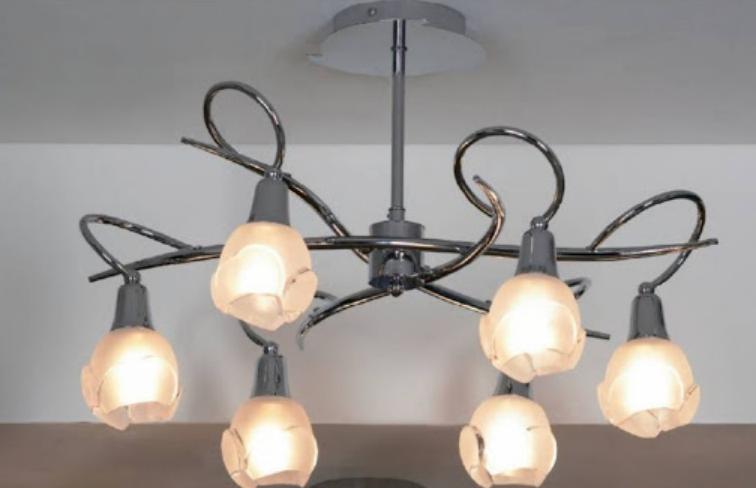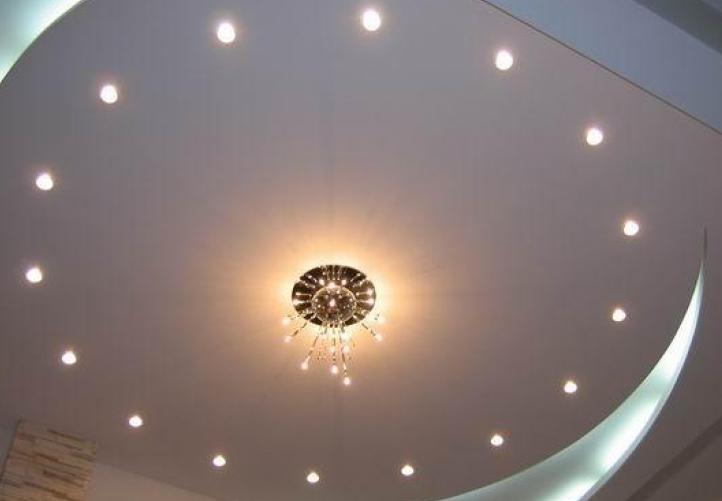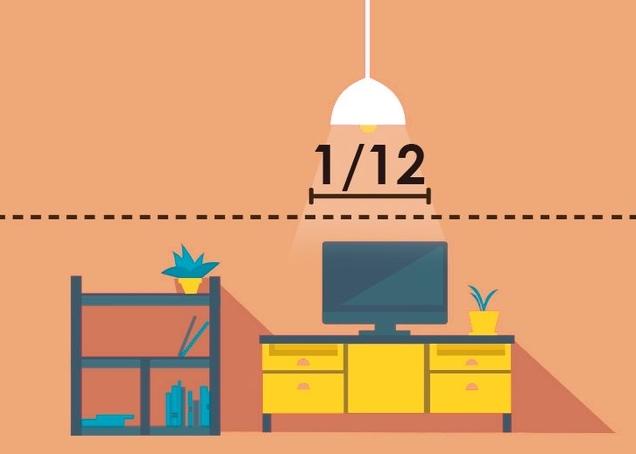What is the rate of light in the living room
Norms of illumination of residential premises are specified in SNiP 23-05-95 "Natural and artificial lighting". There is also information in other documents, such as specialized codes of practice. To ensure a comfortable stay in a particular room, you need to choose a suitable light regime. It differs for different conditions, so it is necessary to understand the subject well.
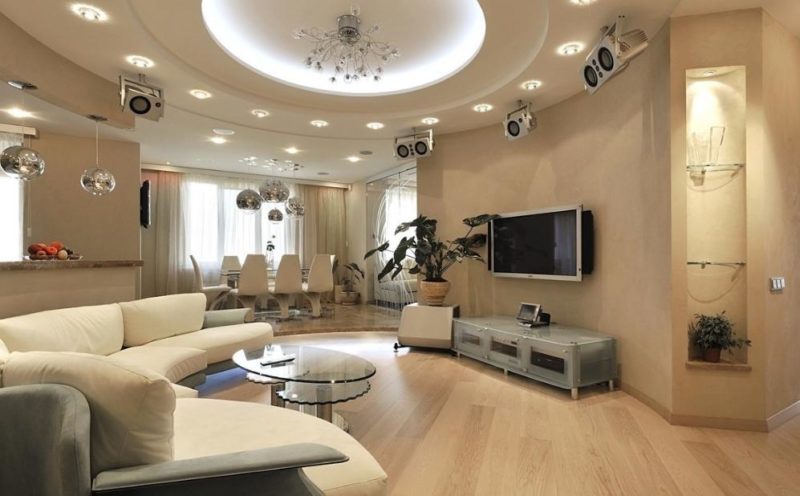
Illumination standards for residential areas of different purposes
In regulations, the figures are usually specified in lux. One lux is the light intensity of one lumen (Lm) per square meter. The easiest way to find illuminance norms in an apartment or a private house is to use the table.
| Room type | Illuminance level in lux |
| Entrances without natural light | 60 |
| Apartment corridors | 50 |
| Storerooms and utility rooms | 60 |
| Staircases and landings | 30 |
| Bathrooms | 50 |
| Basements and attics | 60 |
| Bedrooms | 120 |
| Kitchens and Dining Rooms | 150 |
| Bathrooms and work areas in kitchens | 250 |
| Kids rooms | 200 |
| Living room, living room | 150 |
| Workrooms | 300 |
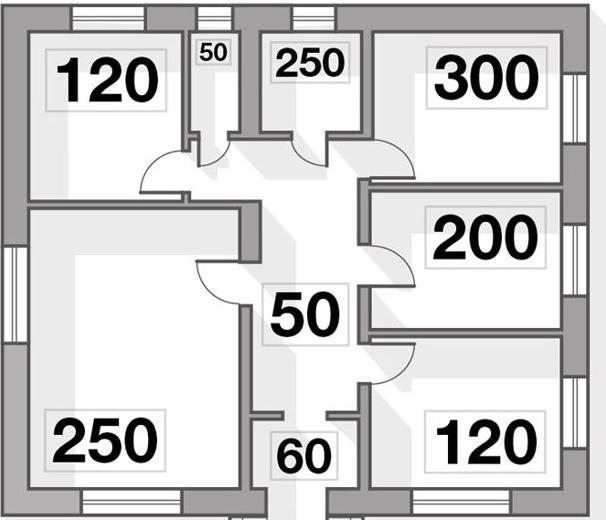
By the way! If you want to highlight a separate zone in a room, you use combined lighting. Additional light sources must be switched on separately.
The illuminance level of the living space: Watt per m2
When only incandescent lamps were used, the power was calculated in watts. But with the spread of fluorescent and LED lamps, this option has not been very convenient. Wattage to luminous flux different models are different, so it's easier to use the figures in lumens and convert them to watts, based on the type of bulb listed in the table.
| Luminous flux, Lm | Incandescent bulb (wattage in watts) | Fluorescent (wattage in W) | LED (wattage in W) |
| 250 | 20 | 5-7 | 2-3 |
| 400 | 40 | 10-13 | 4-5 |
| 700 | 60 | 15-16 | 8-10 |
| 900 | 75 | 18-20 | 10-12 |
| 1200 | 100 | 25-30 | 12-15 |
| 1800 | 150 | 40-50 | 18-20 |
| 2500 | 200 | 60-80 | 25-30 |
These are standard values; actual values may vary. Therefore, when selecting or buying light bulbs, it is necessary to check the data, if necessary to adjust their number or power to obtain the desired level of illumination. It is especially important to do this when buying LED equipment, because there indicators depend on the manufacturer and the diodes used in the lamp.
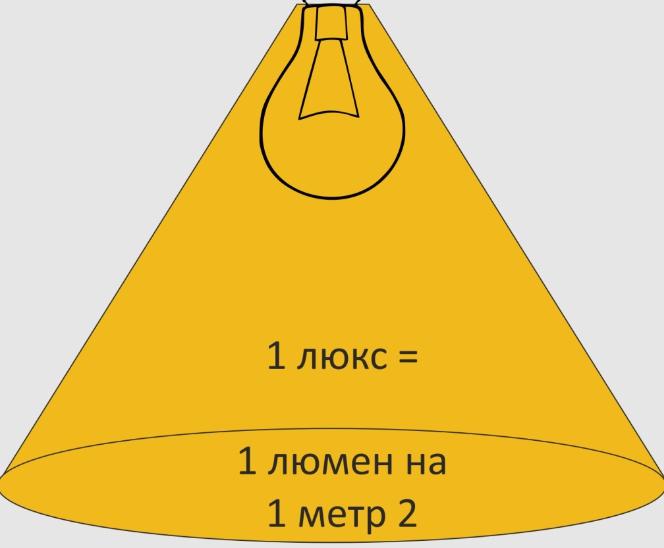
Is the type of lighting and surface characteristics are important
Choose light bulbs should be selected not only by their power and luminous flux, but also by the characteristics of the light. Here it is important to remember a few tips:
- Incandescent bulbs Give a yellowish light, as close to the spectrum of sunlight. They are comfortable for vision, but they have many disadvantages. The main disadvantages are a small resource, high power consumption and strong heating during operation.Incandescent bulbs are not suitable for all chandeliers.
- Fluorescent options give a very bright light, it is important to choose the optimal color temperature. They have a long lifespan, consume little electricity. The biggest disadvantage is the presence of mercury vapor in the bulb, which requires disposal only in specially designated containers.
- LED bulbs can give warm, neutral and cool light. Only the first two varieties are suitable for living spaces. Warm shades are ideal for bedrooms and recreational areas, neutral light is used in kitchens, offices and other places that need bright light.
The level of light depends on the texture and coloring of the walls. In living rooms, you can not use complex methods of calculation. But it is necessary to take into account that light flat surfaces reflect light much better than textured and dark ones. Therefore, it is worth taking into account the finish of the walls, ceiling and floor. The more dark areas, the higher the power of the fixtures should be.
Illuminance calculation
The level of illumination can be determined in different ways. Even if mistakes are made, you can put more wattage lamps or add spot lighting. But it is better to do it right from the beginning to create optimal conditions. Artificial light is selected without regard to daylight, because it is mainly turned on at night. When calculating it is worth adhering to these recommendations:
- According to the table of recommended illumination, the optimal power for a particular room is selected. If the finish is dominated by dark shades, the rate is increased by 30-40%. A small margin will not create much of a problem.
- The illuminance per square meter in lux is multiplied by the area of the room. The result will tell you what the total power of the luminaires should be to ensure normal conditions.
- Also necessarily take into account the height of the ceiling, and depending on it adjust the coefficient. For the height to 270 cm - 1.0, from 270 to 300 - 1.2, 300-350 - 1.5 and 350-400 cm - 2.0. It is necessary to multiply the result by the appropriate figure. The location of fixtures is selected based on the shape of the room, if for a square enough chandelier in the middle, for an elongated better to use 2-3 light sources.
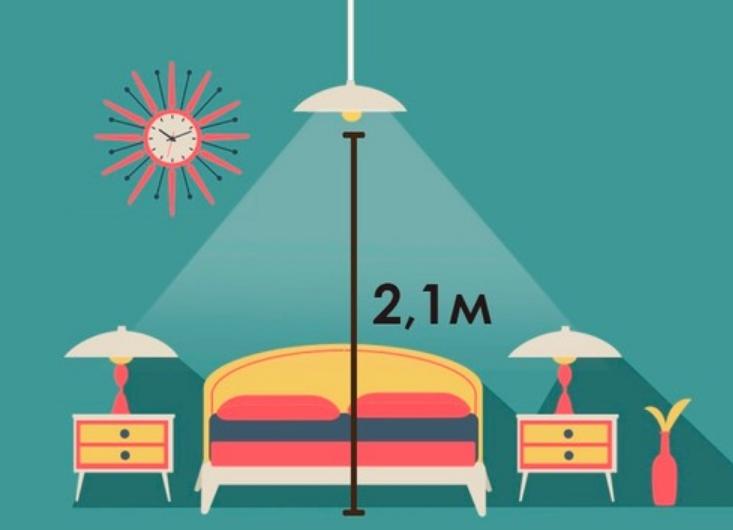
If selected lighting for the workplace, the light should be concentrated on the surface of the desk. It is best to use adjustable luminaires.
How to calculate illumination with standard lamps
Standard refers to traditional incandescent lamps. This option is inferior in efficiency to analogs, but is still popular because of its low price and availability. In this case, the calculations are also the easiest. The standard is considered to be 20 watts of power per square meter. That is, one bulb at 100 watts is enough to fully illuminate 5 square meters.
For bedroom It is better to use a chandelier with at least two modes, so you can turn on a standard or dim light. As for workrooms or living room, you can add a 20-30% margin there to ensure good visibility. Do not forget the correction factors depending on the color of the floor and walls, as well as the height of the lamp.
If you use a chandelier with reflected light or a diffusing plafond, you need to add 20-30% reserve, as the illumination will deteriorate.
Video: how illuminance standards were formed for different objects and tasks.
Figuring out lighting standards for residential areas is not difficult. The main thing is to have a table with the rates for different rooms at hand and use correction factors, if necessary.
